Excursions from Bremen: Hamburg
The other day, whilst on the train to Hamburg, I decided to count how many times I had done that same journey: 25 times. Writing about my experience in Bremen without dedicating an article to this fantastic city seems to me, at the very least, rude, so here we go.
The second biggest port in Europe (next to Rotterdam) and the second most populated city in Germany (next to the capital city, Berlin, obviously), this "second place status" that Hamburg has definitely doesn't do it any justice. Industrial and a port city, sophisticated and a city that never sleeps, Hamburg is a city full of details and contrasts that make it very interesting. As I already explained in the article about transport in Bremen, the regional train journey from Bremen is free with a "Semesterticket" and it lasts between and hour and an hour and a half, so any excuse will be sufficient in order to get yourself to Hamburg: touristy trips, a transfer for trips or nights out. In fact, so you can see how far you can get, once we thought it was a great idea to go on a night out in Bremen and end our night in Hamburg eating hamburgers, then all go back home together.

It is very interesting, as a tourist, to visit the so-called Free and Hanseatic city, a name which it shares with Bremen, since both cities have a similar status in the Federal Republic of Germany. Whilst the rest of the country is divided into "Länder" (federal states, the German equivalent to the autonomous communities in Spain), these two cities count themselves as independent states, thanks to a series of privileges passed down from their past as members of the "Hanseatic League", a commercial and political association of free cities that extended to the North of Europe during the middle ages. The only other German city that is an independent federal state is Berlin, but only thanks to it's status as the capital of the country.
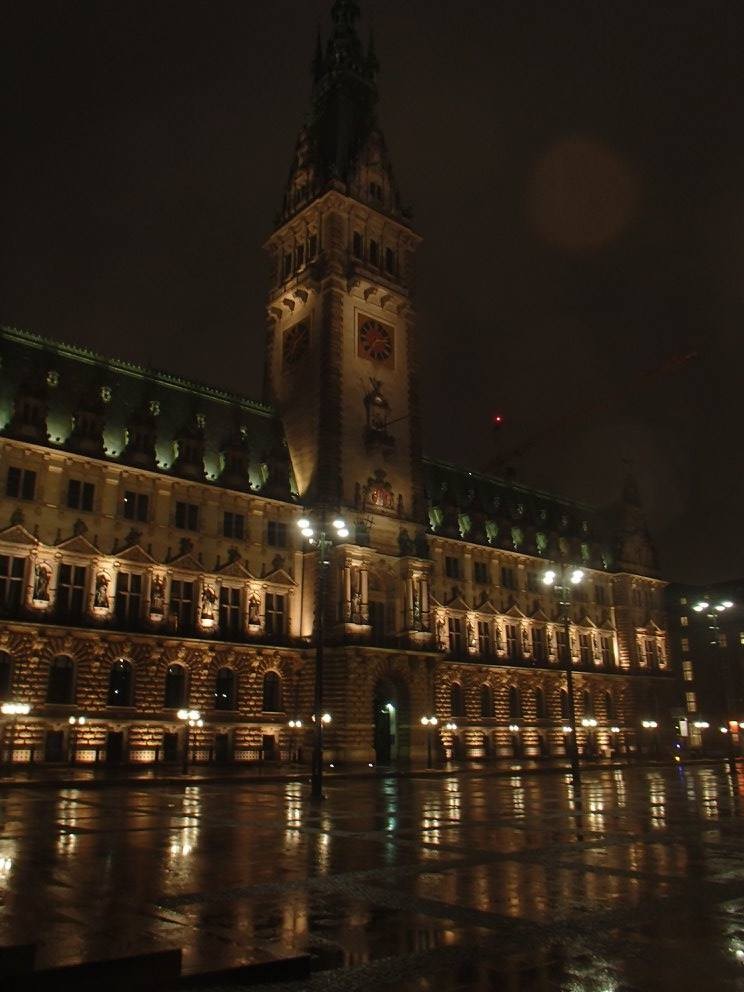
The headquarters of all this autonomous power is the impressive building of Rathaus, the headquarters of parliament and of the town hall. On its façade, you can see the shields of different associated cities, whilst its large tower dominates the Rathausmarkt, the central square of the city. This is one of the few monumental buildings that survived the Second World War. On one of the sides of this square, you can find one of the many canals that flow through the centre of Hamburg, giving the city the nickname of "Venice of the North", which it shares with other cities in the North of Europe such as Amsterdam, Stockholm and Copenhagen.
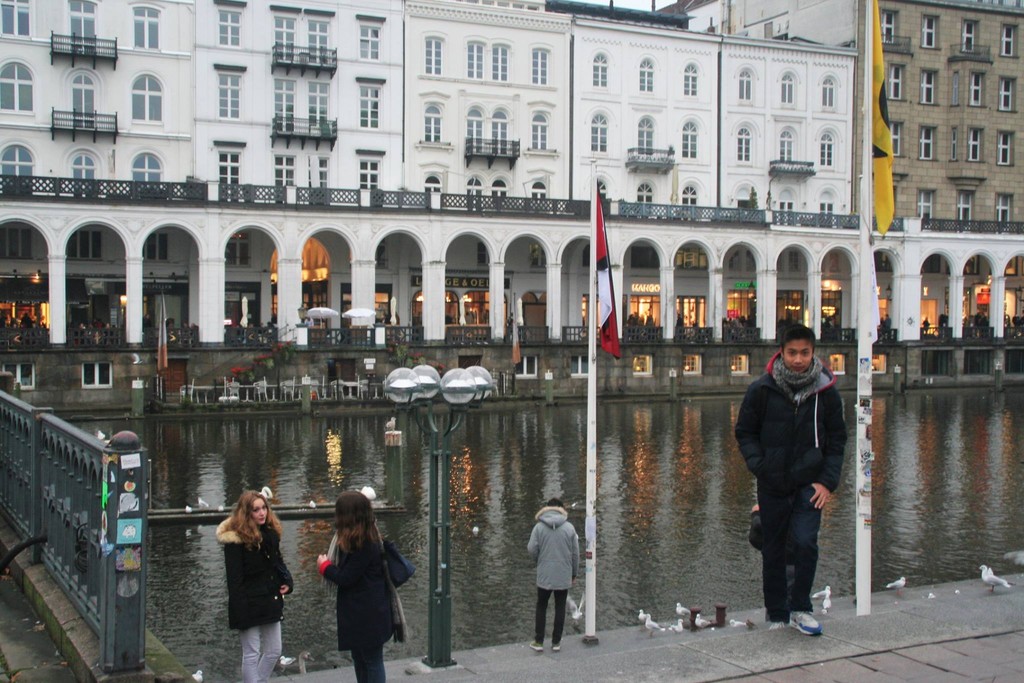
Following this canal, you'll arrive at one of the two giant lakes that form the river Alster right in the middle of the city. The parliament square and the banks of this lake, named Jungfernstieg, are surrounded by one of the most opulent zones in Hamburg, with shopping streets such as Mönckebergstrasse, that lead directly to the main station and the art museum, or Kunsthalle.
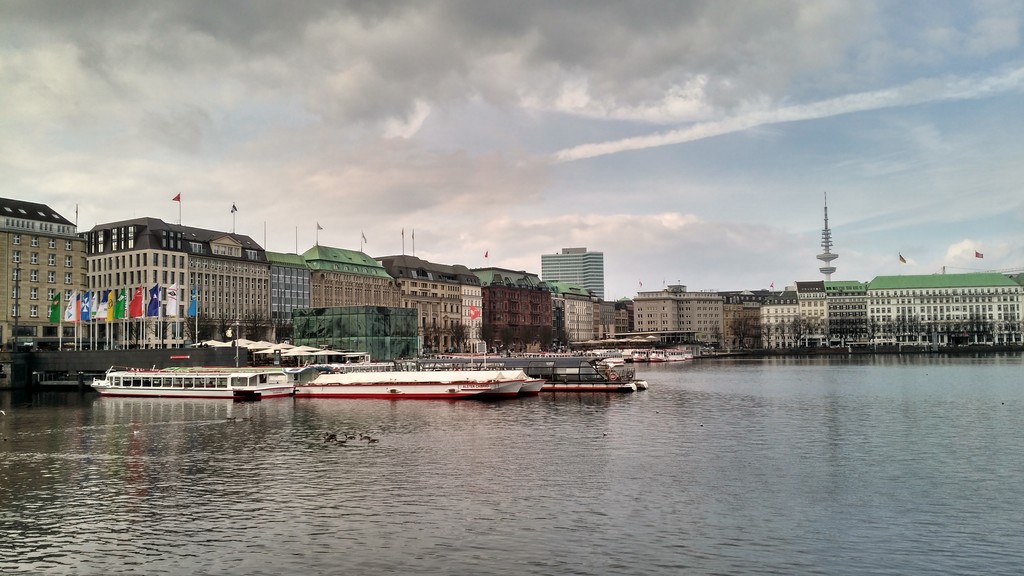
This street also has two important examples of the cities religious architecture, they are the churches of Sankt Petri and Sankt Jacobi, whose slender steeples form part of the skyline of the city. The interior, with a modest and luminous Gothic style, follows the very representative style of the Protestant churches in the North of Europe.

As I said before, Hamburg shows itself as a city with a strong commercial character, because since the middle ages, it has been one of the main ports in Europe thanks to its location which is close to the mouth of the Elbe, which flows into the waters of the North Sea after running for more than 1000 km through the middle of the continent. This is still maintained today throughout its numerous docks, that have been converted into an important economic settlement, something that can be confirmed in the streets of Hamburg - they're a lot more rich and luxurious than the streets of Bremen or Berlin, for example. From the point of view of an architect, the city is full of interesting buildings and testimonies to modern and contemporary architecture.
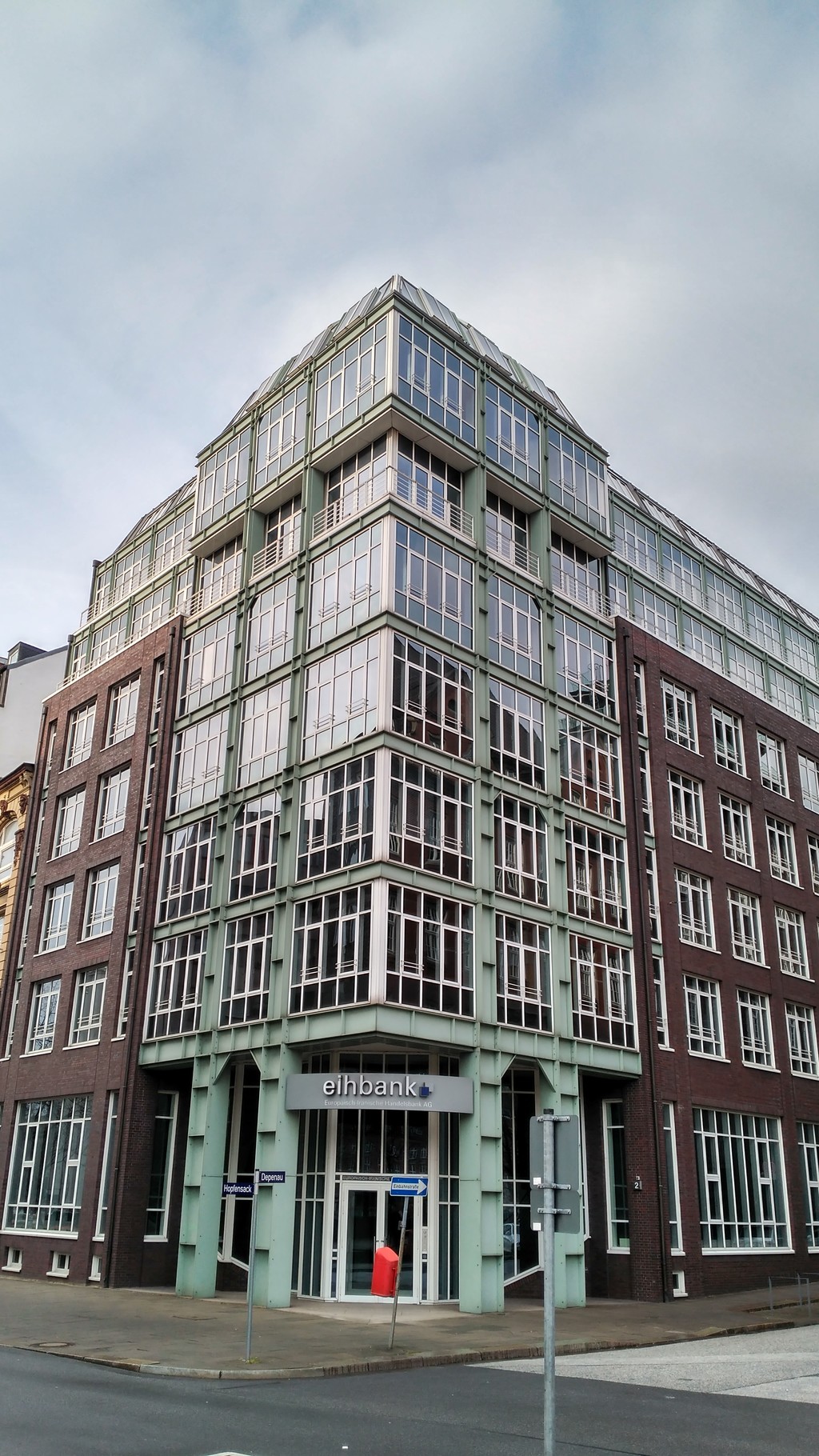
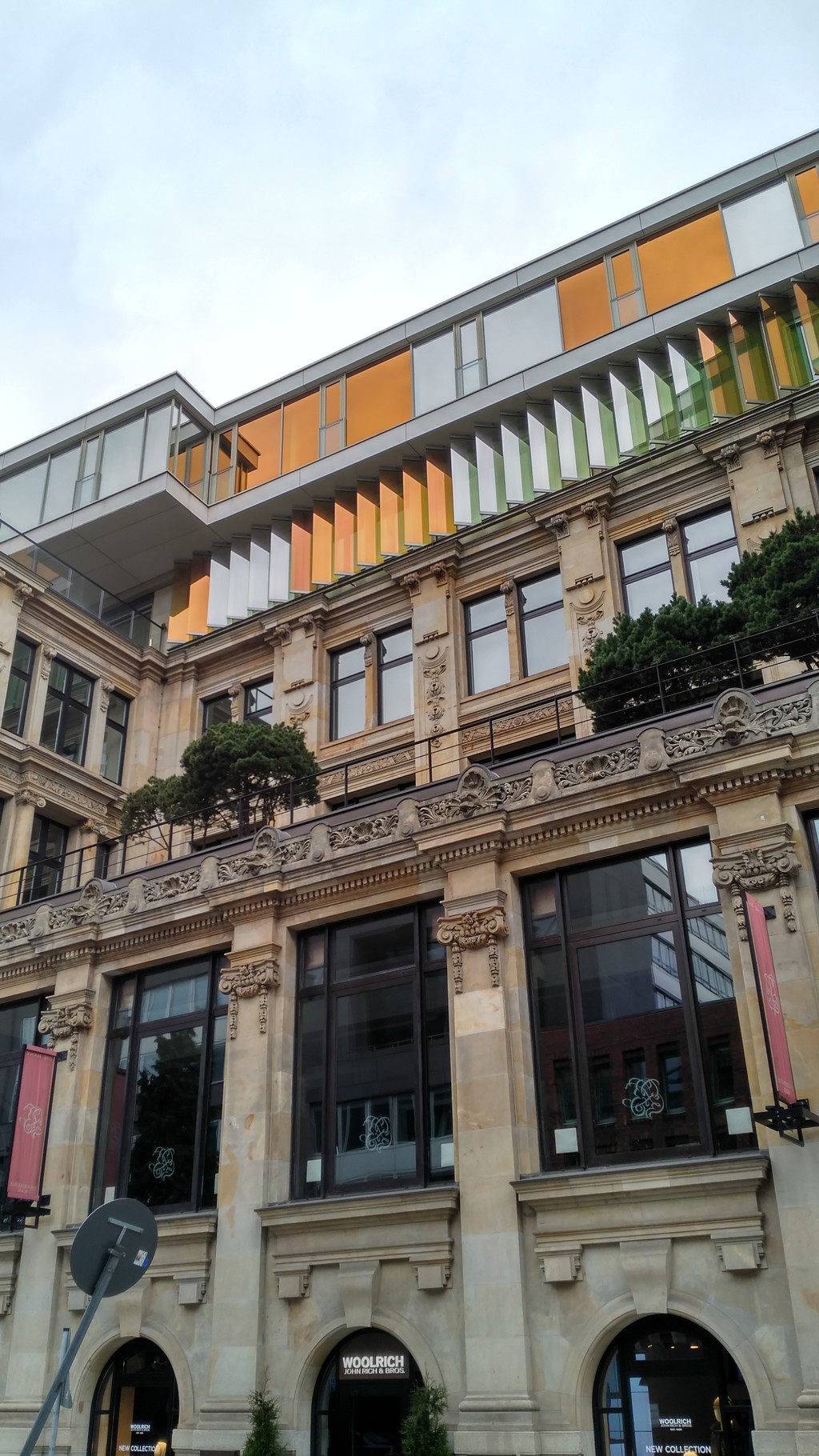
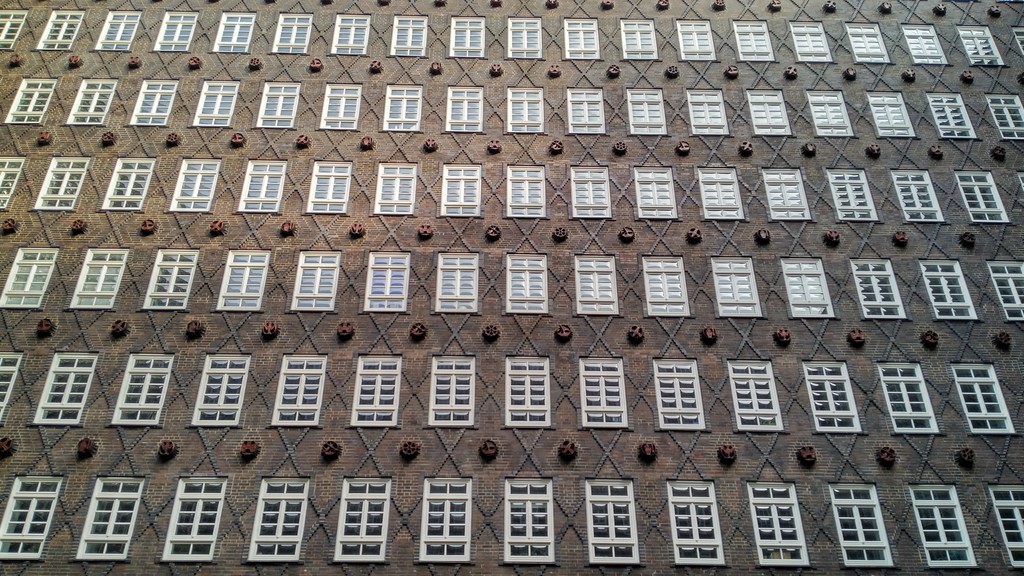
What's very interesting is the Chilehaus (House of Chile), a building which was constructed in the 20's by a rich entrepreneur who used to import Chilean products to Europe through the port in Hamburg. Its expressionist style made of brick and its sharp, pointed shape relates it to the Flatiron Building, one of the first and most iconic skyscrapers in New York.
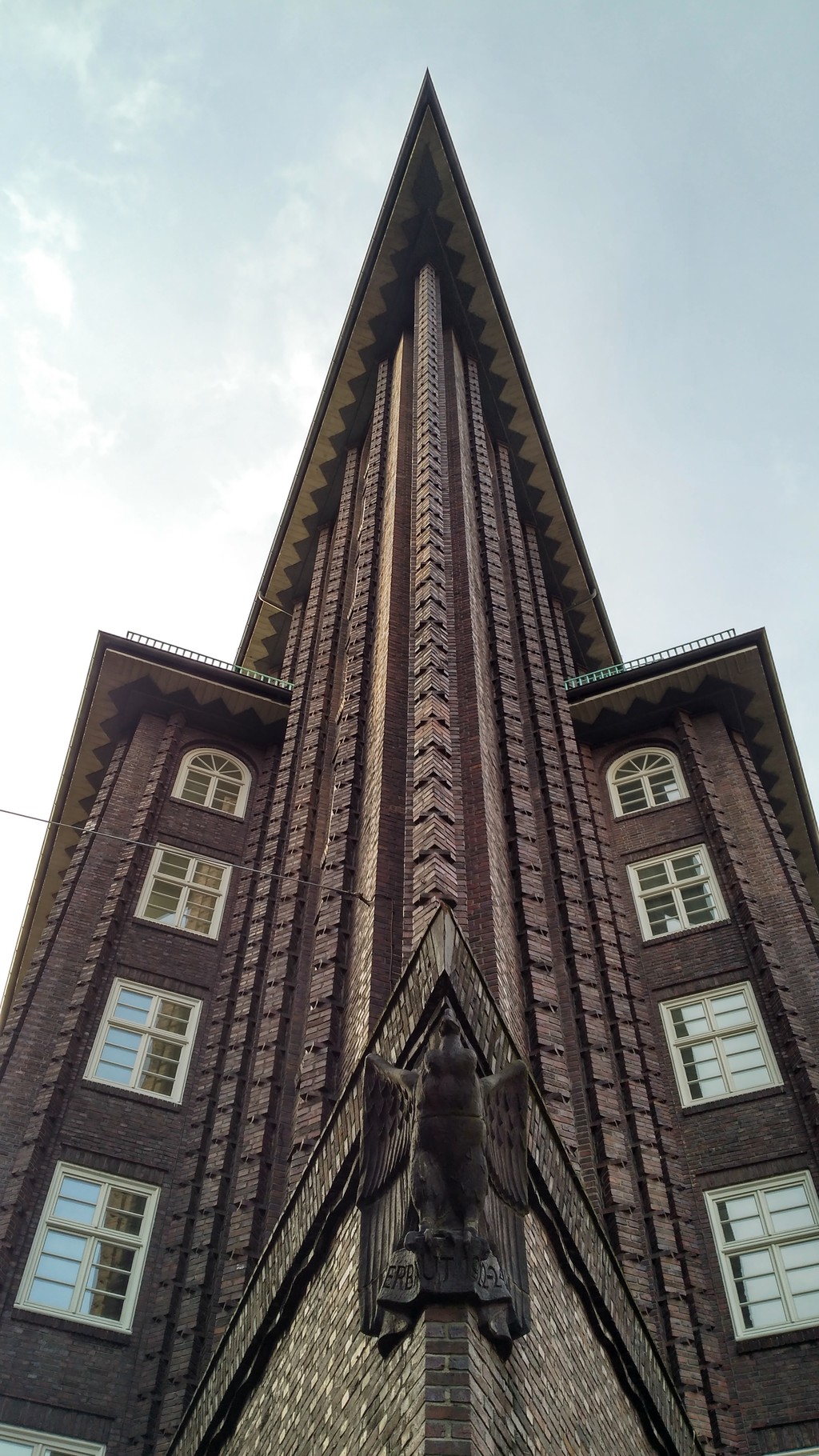
From the Chilehaus, we continued on to the port, where we found ourselves at the remains of Sankt Nikolai church. The whole city was practically destroyed and reconstructed due to the bombings during the Second World War, but the town of Hamburg decided to leave this church without reconstructions as a memorial to the horrors of the war.
From here, you quickly come to the Deichstrasse, one of few areas that show what Hamburg looked like in the olden days. The narrow brick houses with façades that were surmounted by cranes, face directly into one of the canals at the rear, easily mimicking an image similar to one of the canals in Amsterdam. This street is also one of the best places to try food that's traditional to Hamburg, like the frikadellen, a previous version of the hamburger, which then made its way over to America along with the numerous German workers at the end of the 19th century and the beginning of the 20th century, where it then evolved into the modern hamburger, using the name of its place of origin.
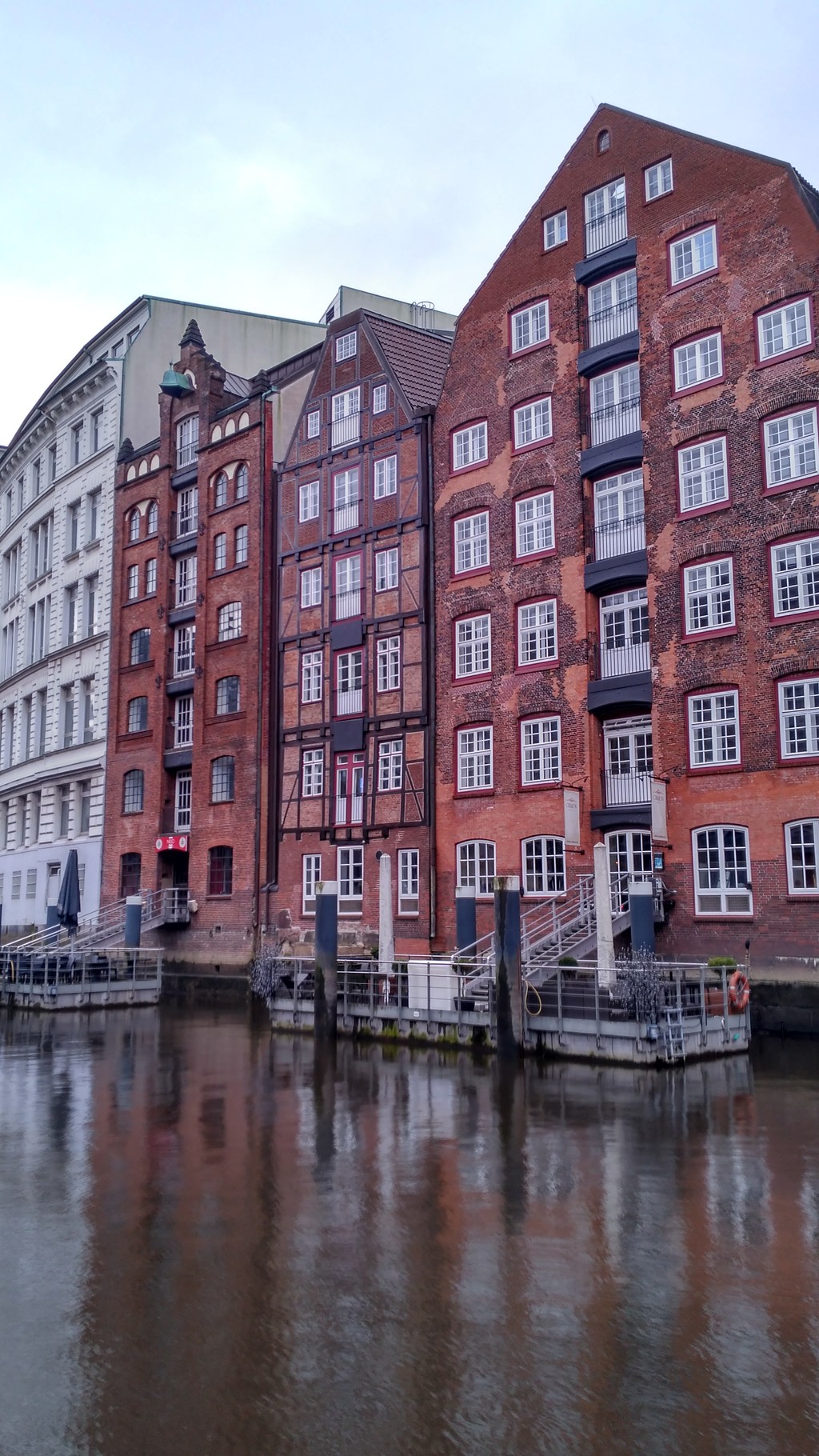
The second point of interest in the city is the port area, which is known as Speicherstadt ("city of spices"), an area full of red-brick grocery stores that used to house numerous commercial merchants. Nowadays, the port activity has moved downstream, where thousands of cargo ships, containers and cranes were working frantically, whilst the old grocery stores now house different museums, such as the famous Miniatur Wunderland, the best museum of miniatures in the world.
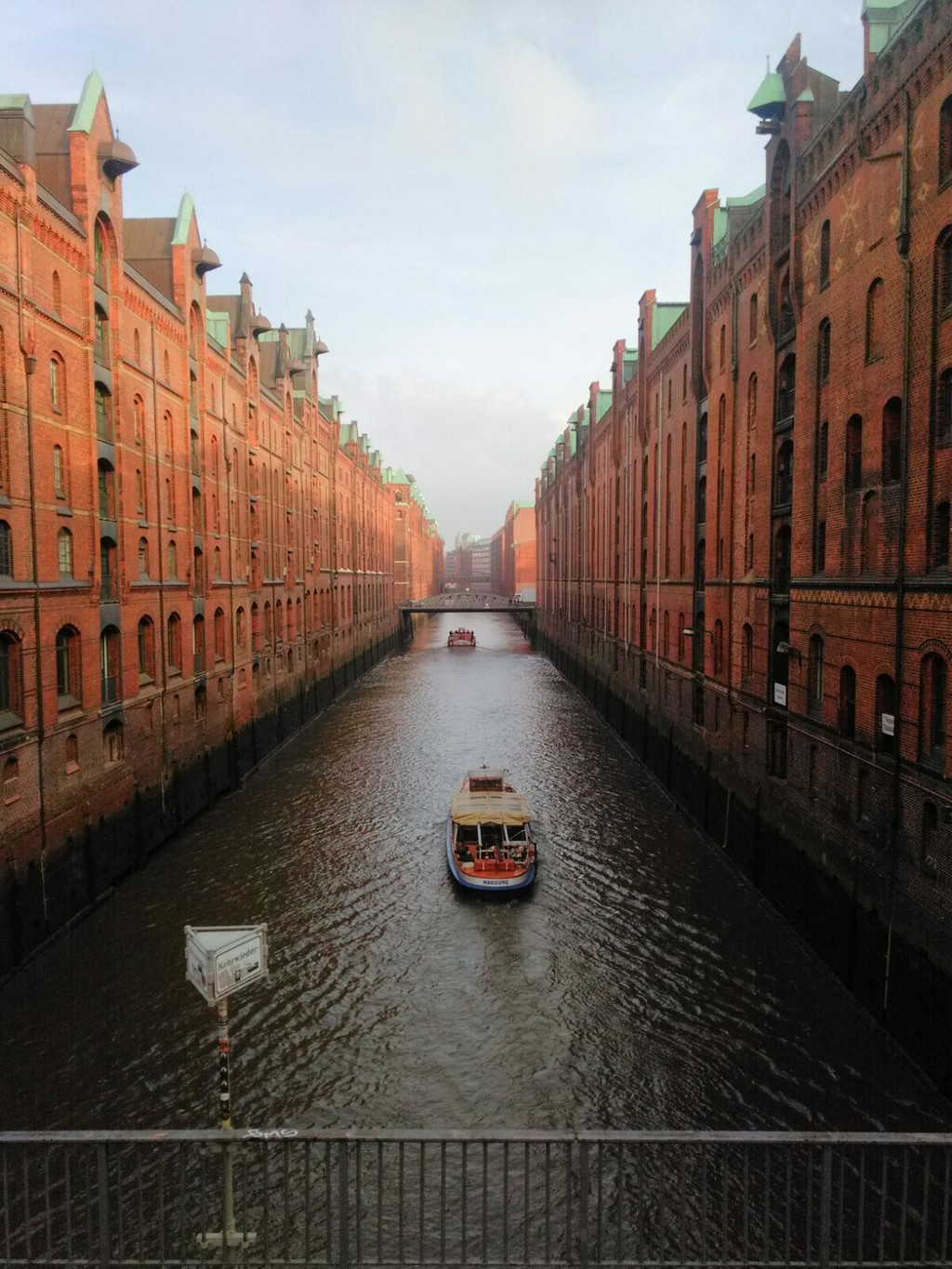
This area is the precursor of HafenCity, one of the best urban projects in Europe, that has the aim to convert all of the old industrial area of Hamburg into a huge residential area and high rise offices, following a series of urban, architectural and economical criteria with the aim of expanding the city centre in accordance to the current economic and social levels. The brand which is carrying out this project is the Elbe Philharmonic Hall, a multimillion euro project carried out by the architects Herzog & De Meuron.
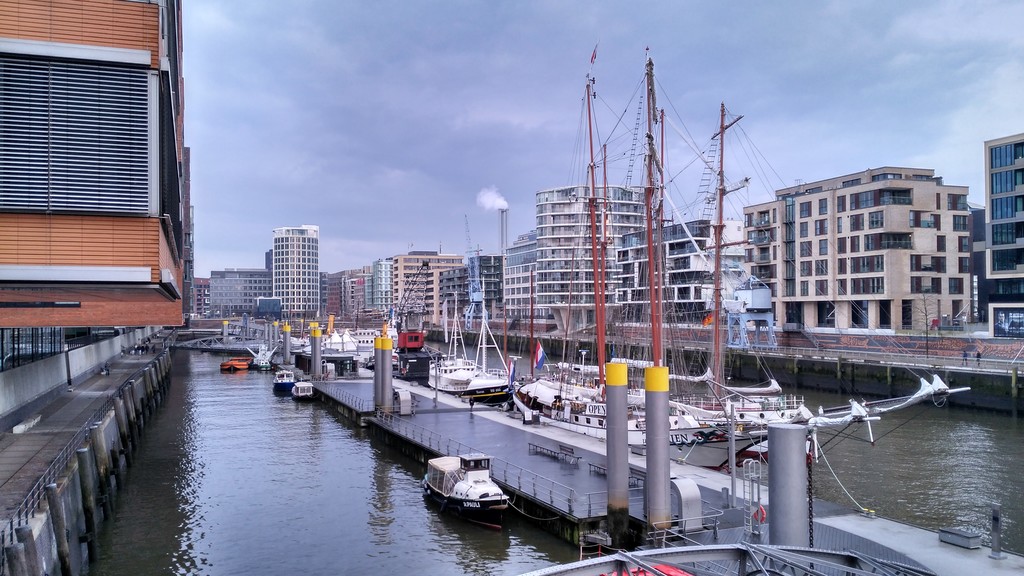
With a fairly complex interior, the building is split between the massive brick base of a huge warehouse and a large quantity of glass which creates the illusion that the building is floating with grace and agility against the waters of the Elbe. In my opinion, it's a very interesting building of a conceptual level, as we can see in the following photo, but there was a few problems with its construction and final appearance.
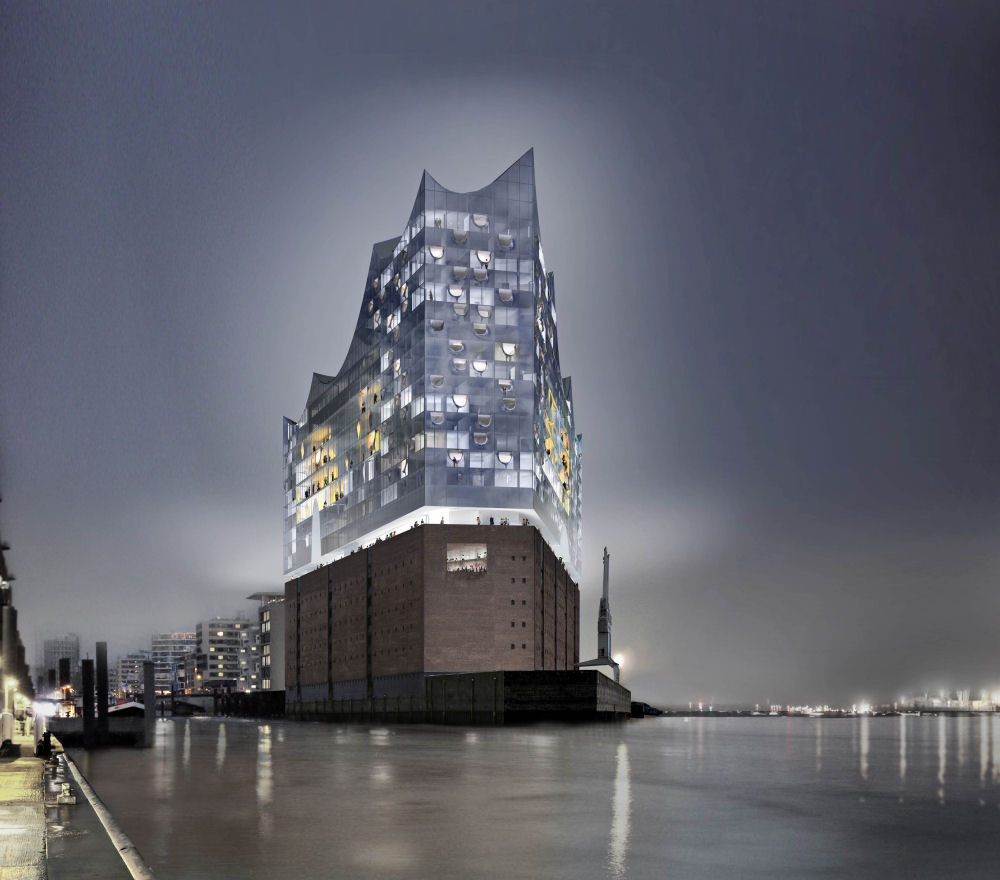
On one side, the upper levels don't give off the effect of weightlessness and transparency that the original project suggested, since the "smoky effect" of the crystals makes it seem as if they were just fogged up, whereas the apertures of the crystals do not end up creating a pleasing effect. Also, I have the opinion that it is good to innovate in the world of architecture and to try to discover new techniques and materials, but when a project with an estimated cost of 77 million euros ends up costing 789 million euros, it seems like an example of irresponsibility and over-spending. At the end of the day, it is an attempt at using architecture as a tool to demonstrate wealth and power - an attitude like that, personally, annoys me.

As well as all these touristy places, Hamburg benefits from having a great nightlife whose epicentre is the Sankt Pauli area, around Reeperbahn. It's full of bars, clubs and concert halls - this district has been accommodating for all kinds of "night-owls" for decades now. In fact, The Beatles started to become famous after developing part of their career in these streets, and even today, the city is full of concerts. If that wasn't enough, Sankt Pauli has also been an oasis of dark debauchery and sin, with its numerous strip clubs and exotic shops. The most exposed street to this is Herbertstrasse, closed off by two walls that stop women from entering. This street is full of shop windows with prostitutes, in a similar was to the Red Light District in Amsterdam. There is also a strong techno and underground scene in this area of Hamburg, with numerous events and alternative establishments. One example is Ubel und Gefährlich, located inside a bunker built by the Nazis, which I have already spoken about at the end of this article.
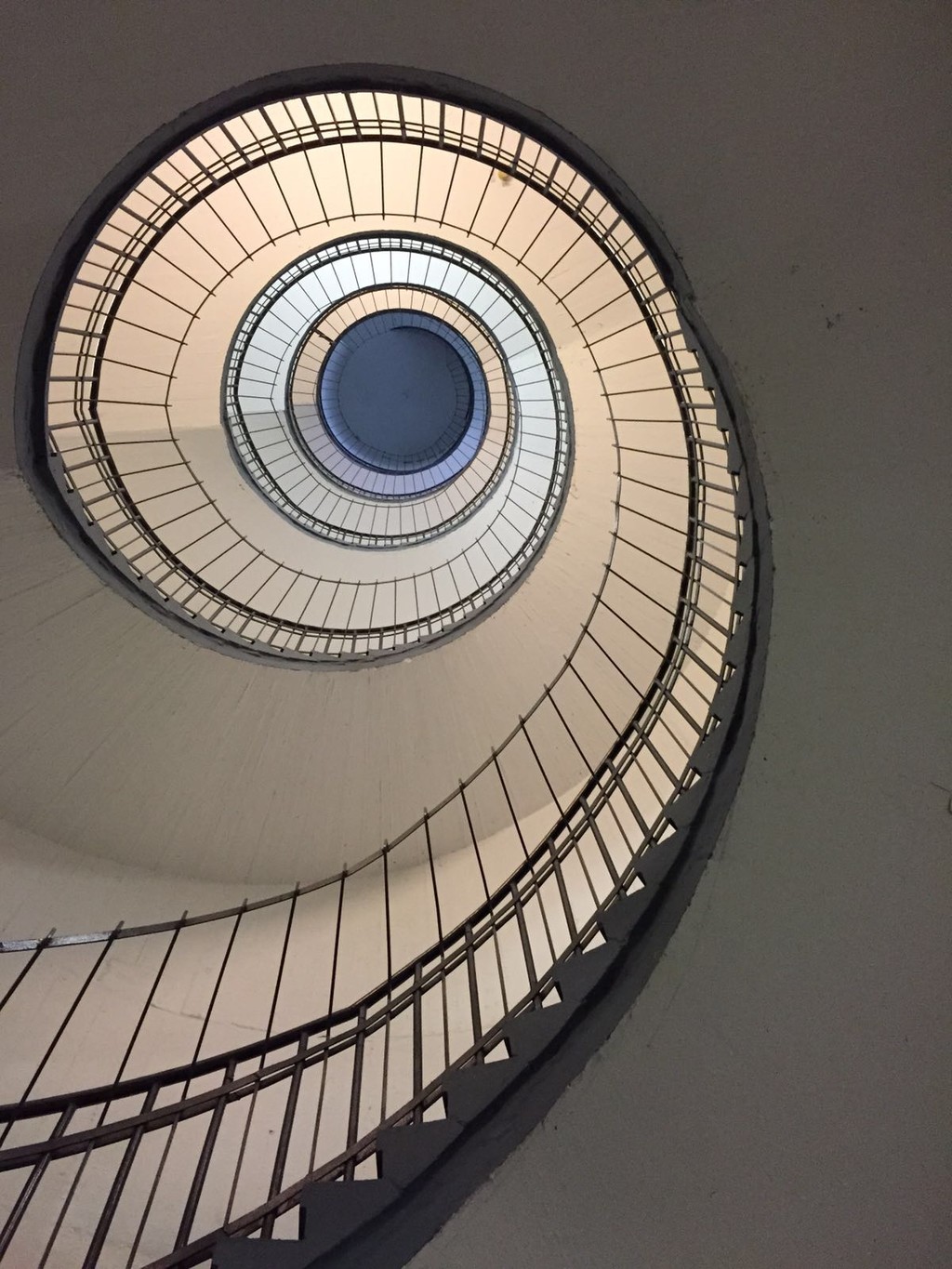
In short, Hamburg is a great city with its own spirit that is very interesting, that allows you to get to know the decent, hardworking and responsible image that we all have of Germany, as submerging yourself in a dark and alternative subculture hardly fits in with this image. Without a doubt, one of the biggest advantages of being in Bremen is the accessibility and closeness to this fantastic city, that contributes a much more cosmopolitan character to the Erasmus experience.
Until the next post!
Photo gallery
Content available in other languages
- Español: Excursiones desde Bremen: Hamburgo
- Français: Excursions de Brême : Hambourg
- Português: Excursões desde Bremen: Hamburgo
Want to have your own Erasmus blog?
If you are experiencing living abroad, you're an avid traveller or want to promote the city where you live... create your own blog and share your adventures!
I want to create my Erasmus blog! →































Comments (0 comments)